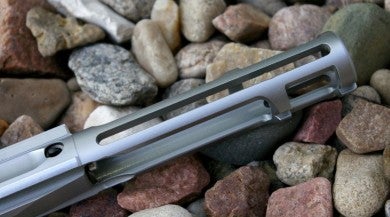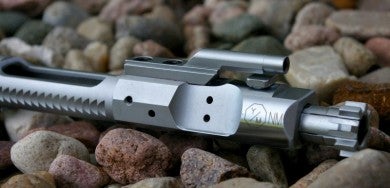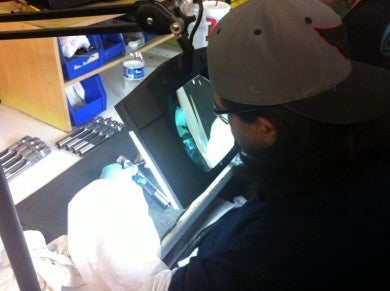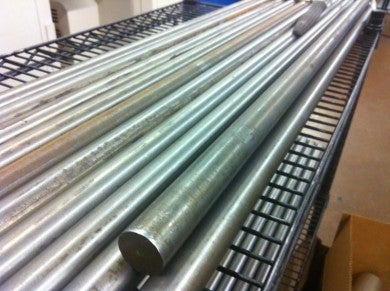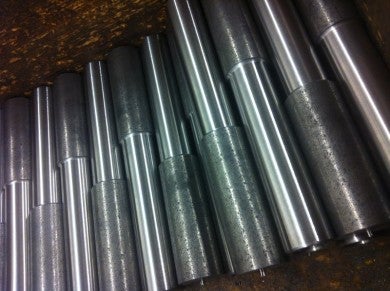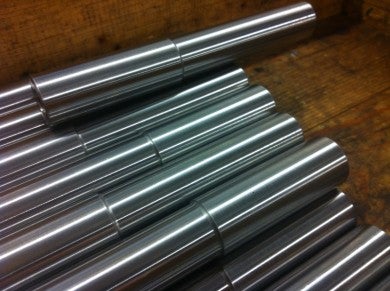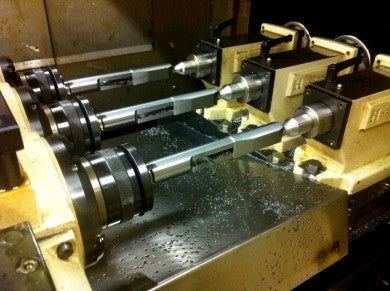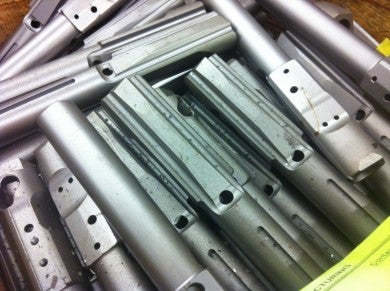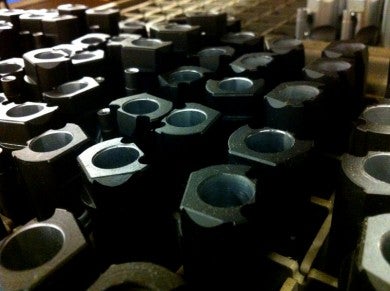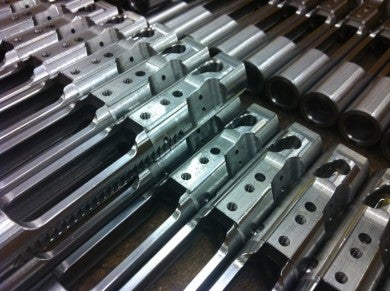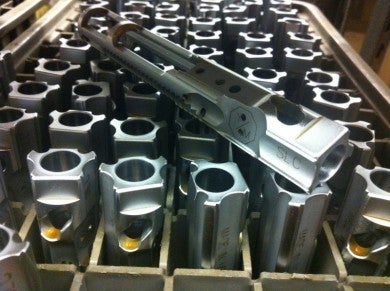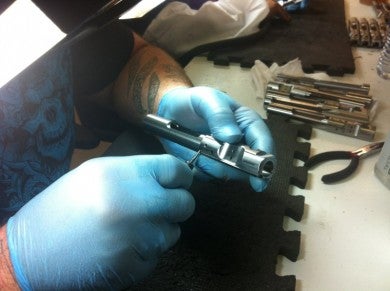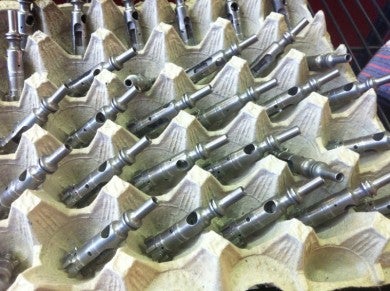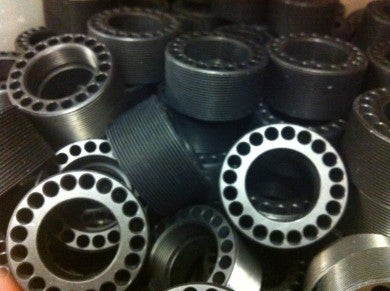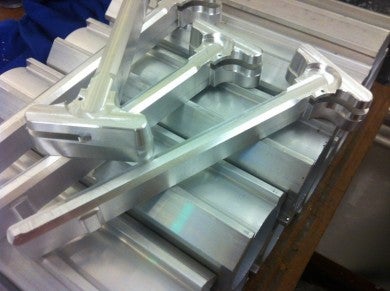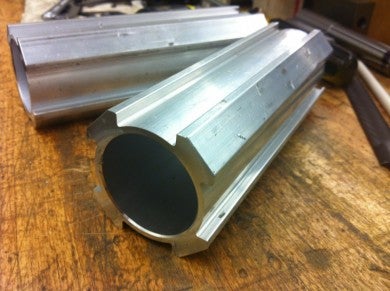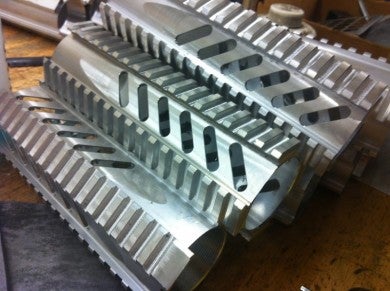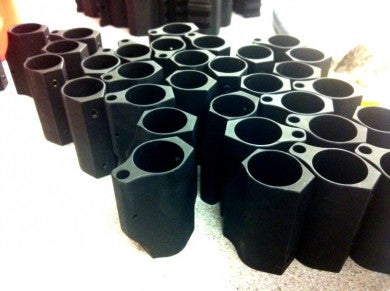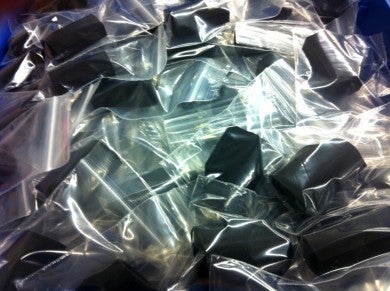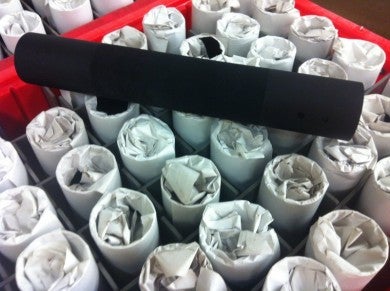Young Manufacturing Factory Tour
Major Pandemic 02.10.14
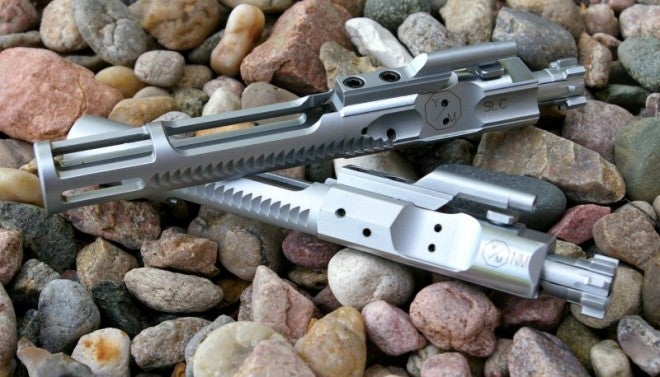
During a recent trip to the Pheonix area, I was fortunate to get a personal plant tour of Young Manufacturing by Dan Young himself. I was stunned to learn just how much work goes into making the carrier and complete bolt carrier group (BCG) for an AR-15, but first let’s look at what this critical part does in the AR-15.
For every round fired, the BCG is generally beaten like a red-headed step child. (My apologies to all red-headed step children. It must have been a rough upbringing.) Pull the trigger, and the BCG goes to work. The firing pin is whacked by the hammer with thumb crushing force (don’t ask how I know), the tiny firing pin tip hits the primer detonating the round, a bullet zips down the barrel, and then things really heat up for the BCG. The gas block and tube reroute some hot gas back to the BCG gas key. The red hot, rerouted gas delivers a 100-125 psi blast behind the three bolt rings, which push the bolt forward in a camming effect about .25” and turns the bolt face clockwise to unlock the bolt from the barrel. The remaining gas pressure slams the BCG rearward from its previous motionless state, extracting and removing the empty case. The BCG continues rearward until the buffer and spring delivers a brief delay before violently reversing direction and slamming the BCG right back into battery at about 6.88 ft/sec (or around 5 MPH), all while still managing to pick up one (and only one) more round in the process. It does this entire roughly 6” round trip in around .092 seconds.
This is a pretty impressive feat, and it’s elegant when it works perfectly. However, poor materials, design, and workmanship can make any or all of the BCG’s fourteen components vulnerable. It is without question the most difficult design challenge of the entire AR, performing the most complex mechanics, all while being both durable and graceful enough to eject and grab the next round in the process. If any of the fourteen bolt carrier group components fail or are out of spec, then the gun will not fire, not cycle, not feed another round, or it will jam or cause some other more catastrophic issue. It is the most complex part on the rifle, and it affects every critical function of the rifle from accuracy to reliability.
Ask a hundred AR owners who they think makes the best BCGs, and most will name a bunch of manufactures whose name appears on the side of rifles. The reality is that the industry rarely works that way. There are only a few true AR component manufactures making AR parts, and fewer who make the BCG. Young Manufacturing (YM) is one of the preeminent BCG manufacturers and is considered the best in the business. Here’s why.
Touring YM
Many manufacturers just assemble parts made elsewhere. It is refreshing to see real manufacturing where raw steel goes in one end of a plant and finished product comes out the other. To assure the highest quality, YM starts by sourcing 100% USA virgin steel rods instead of the less expensive but inferior imported “re-melt” steels. YM then machines components in its Pheonix USA plant on state-of-the-art CNC machines. Starting with the highest grade materials and using top end machining technology with a focus on each detail, Young Manufacturing delivers the best BCG in the business.
Once the rods are cut down to roughly a carrier size, they are profiled, then turned and milled to a more recognizable carrier shape. Final machining delivers a carrier that is ready for final inspection and hand polishing. In fact one facet of production is stunning: YM actually has two guys hand inspecting and hand polishing each and every edge and radius on the carrier under giant magnifying glasses. Nearly every other manufacturer just tumbles the carriers to polish edges, but YM believes the only way to assure perfect quality is by hand inspection.
As of late 2013, YM manufactures all bolts in house with carpenter steel, which is considered the best steel available for AR-15 bolts. YM has exclusively used either FN or Barnes Precision bolts, but during the great AR-15 parts shortage of 2012-2013, Dan decided it was time to begin manufacturing the bolts and gas keys in-house. So at this point, YM manufactures 100% of the bolt carrier group in house.
This picky material sourcing and production delivers BCGs that consistently surpass US mil-spec, and this inclues YM’s patented National Match AR-15 bolt carrier and superlight National Match carrier, which are prefered by those that like to shoot tiny little groups. Although their website does not reflect their complete product line, the company also produces a broad array of phosphate and chrome AR-15 and AR-10/308 bolt carriers, flash hiders, rail systems, bolt assembly tools, and many other AR related products.
To Stake or Not to Stake
There has been a lot of talk about the pros and cons of staking the gas key on the carrier. Many an “expert” (including me) has advocated or indicated a preference of having the gas key staked. Young Manufactuering’s opinion is that they will not stake keys, nor have they since 1991, and this has never been even a minor issue from customers.
Per YM, the US mil-spec assembly drawing requires the carrier key to be staked and sealed with Permatex gasket sealer. Contrary to some popular opinions, staking does not “seal” the gas key, and in reality only has one function: to keep the screws from backing out. In addition, staking can cause problems. If you do not properly torque the screws to 56 inch pounds, you will be staking a screw that is loose or one that is over torqued and prone to breakage. Although required, to YM’s knowledge, this is a process no one other than YM does.
To complete Permatex sealing and prevent the screw from backing out, they first clean the oil from the gas key and the mating surface on the carrier. They then clean the oil from the screw threads, apply a light coating of Permatex high strength threadlocker gel to the bottom of the key, and allow the whole thing to cure for 60 minutes. Next, they coat the screw threads with the same gel and install the key and torque the screws to 56 inch pounds.
Even the really nerdy AR builder rarely, if ever, assemble a carrier key with Permatex because of this precise and somewhat delicate procedure of potentially gluing shut the vent holes. In fact, I know of no one who has even done it. It is a task left to professionals such as YM, and if the top BCG manufacturer says staking is unnecessary and potentially decreases reliability, I for one believe them.
Final Thoughts
Many regard YM’s Dan Young as the new godfather of BCGs, as his work on bolt refinements have made the AR platforms work better and longer than we thought was possible.
Whether you are looking for a special Chrome National match BCG or stock level BCG or something in between, each and every bolt carrier group is of supreme quality and will enhance the overall functioning of your next AR build.
Specs
YM M16 National Match bolt carrier group
- Weight .70lbs
- $245
YM AR-15 Super Light National Match bolt carrier group
- Weight .55lbs
- $265
